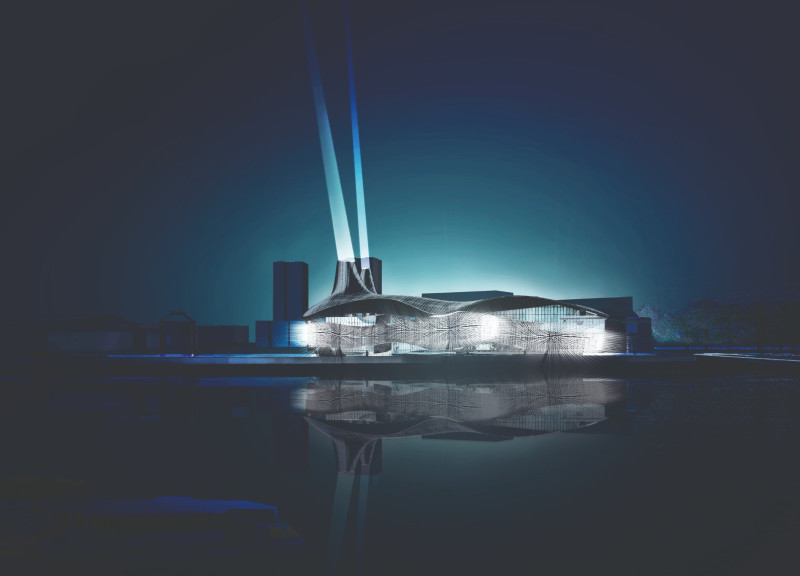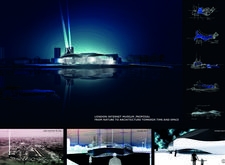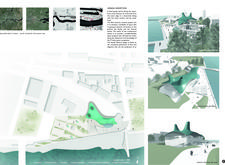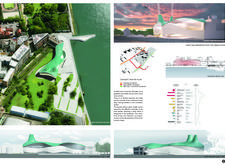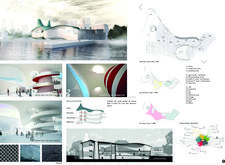5 key facts about this project
### Overview
The proposed London Internet Museum is situated in North Woolwich, an area distinguished by its historical significance and contemporary urban challenges. The design aims to harmonize the themes of nature and technology, fostering engagement and learning within its waterfront context. By establishing a dialogue with the Thames River, the museum serves as a repository of knowledge about the digital age, reflecting the evolution of technology over time.
### Materiality and Form
The architectural design employs a thoughtful selection of materials to convey durability and transparency. Concrete provides a robust structural base, while glass façades enhance natural illumination and offer views of the surrounding environment. Metal cladding serves as a modern aesthetic component, incorporating reflective qualities that respond to changing light, with shades of green and blue reinforcing the connection to nature. Additionally, green roofs contribute to ecological sustainability, integrating natural elements into the overall design narrative.
### User Experience and Circulation
The interior design promotes exploration through expansive open spaces and flexible exhibition areas. Features such as a central atrium and spiraling circulation paths facilitate movement, guiding visitors naturally through diverse experiences. Areas designated for community engagement, including forums, workshops, and cafés, support various activities and interactions. The circulation strategy prioritizes accessibility and integrates with the waterfront, allowing for outdoor engagement and reinforcing the relationship between the building and its natural surroundings.


